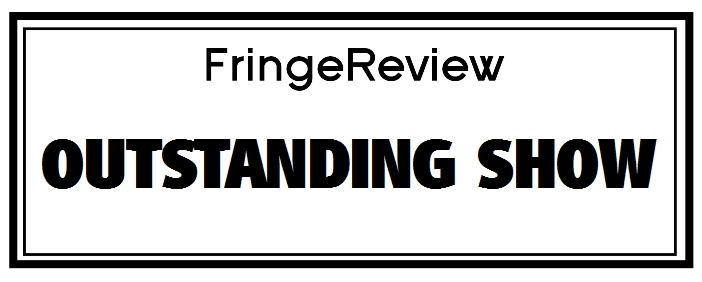Brighton Fringe 2024
Copernicus Now
Michael Brunström

Genre: Comedy, Fringe Theatre, Historical, One Person Show
Venue: Sweet@The Yellow Book 3a York Place Brighton BN1 4GU Sweet Venues Brighton
Festival: Brighton Fringe
Low Down
Seriously?
You’ve scrolled down the Fringe Review listings and you’ve chosen to open a piece about Heliocentrism?
Maybe you skim-read it – and thought this is going to be about heterosexuality or something?
I bet you did …
Well, it’s not.
It’s about Hope. And about a sixteenth century polymath.
Review
Ah, you’re still here.
Well, Michael Brunström’s show is about hope; about how the world is in dire straits both environmentally and politically, and how we desperately need the hope of a new way of looking at things – a paradigm shift.
And as a model for just how completely to overturn preconceived ideas, he offered us – Nicolaus Copernicus. Just to bring us all up to speed – here’s Wikipedia: ‘Nicolaus Copernicus was a Renaissance polymath, active as a mathematician, astronomer, and Catholic canon, who formulated a model of the universe that placed the Sun rather than Earth at its center.’
If you’ve read this far, I’ll bet you’re looking back at the title – “I thought this was about a comedy show …”. Well, it is; and Michael Brunström is the funniest standup I’ve seen in a long time: both in his words and his physical comedy, and he kept a capacity audience at The Yellow Book in pretty much constant laughter for almost an hour.
Brunström’s a big man, but after he’d burst onto the stage, he rushed off for a second, and then – oozed – back into the room through the half-open door. Almost two-dimensional … and it seemed he was weightless, as he sort of – floated – up against one of the walls, arms widely stretched as though he was drifting in space.
Because it’s space that interests him in this show. The Universe – well, at least the Solar System.
“Where does the Sun go?” he asked plaintively. And of course, if the Earth is fixed at the centre of the universe – where DOES the Sun go when it sets?
Brunström explained a bit about the Ptolemaic model of the universe – you’ll have to Google Ptolemy for yourselves as I haven’t got the space here to give you everything about a Greek astronomer from 150 AD. Suffice it to say that the Earth is right at the centre – Brunström produced an enormous inflatable globe which he passed to a rather frightened-looking audience member, and gave out cardboard discs with the names of the planets on. In Ptolemy’s model the planets rode round the Earth on nested crystal spheres – but the Yellow Book’s budget wouldn’t run to those, so we just passed the planets along the rows of seats, as a kind of Poundland Ptolemy.
Brunström talked a lot about the mathematics of astronomy – but don’t worry as I’m as hopeless at maths as I’m sure you are, so I’m not going to get into any of that …
But Copernicus WAS a mathematician, and now Brunström donned a Renaissance cap, black felt with a gold tassel at the front, and became the Polish polymath. He took back the large globe, turning it, close to his face, as though he was on the surface – giving us a very visual sense of how the planet rotates.
Because THAT was the great paradigm shift – that the Earth isn’t FIXED at the CENTRE of the Universe. A completely different way of looking at how things are – an intellectual jump that puts Copernicus up there alongside Newton, Darwin and Einstein.
It doesn’t just simply rotate – the planet turns in a number of orientations and timescales, and Copernicus got us all on to our feet to dance out the motions. Brunström put the disco into discovery –
The daily rotation of the planet.
The yearly track around the Sun.
The slightly off-centre twisting motion that takes twenty-five thousand years for one rotation. (a confession – I was the class nerd who referred to it as ’precession’ …)
I’d not heard of Michael Brunström before – but I’d been at The Yellow Book two nights earlier and seen his poster. I was attracted by ‘Copernicus’ (through my nerdy interest in science) which is why I was there. On his website, Brunström describes himself as a ‘surrealist comedian’ and after watching the weird juxtapositions of some of his material I would certainly agree. He can really work his audience, too – at the close he had us on our feet, stretching upwards, trying to FEEL the motion of the planet.
His delivery got more intense, almost like some evangelist preacher offering Redemption, but in Brunström’s case his vision took us out, beyond the planets and the Solar System, to the billions of other stars in the Milky Way, and out again to the billions of other galaxies “cavorting across the fabric of space-time …”
Wow! The point of all this was to give us a little bit of the awe – and fear – that Copernicus would have felt, when he realised that the story he’d been given … just wasn’t the reality. Wasn’t enough.
On a personal note – sometimes I look towards the Sun; and instead of seeing it ‘up there’, I alter my conceptual viewpoint and choose to see it ‘there at the centre’, as though we’re swinging round it like on some wild fairground ride. Which in a way, we are.
Michael Brunström’s show gave me the same sense of dizziness. If you get a chance to see it – I guarantee you’ll never look at a sunrise or a sunset in the same way, ever again.


















































